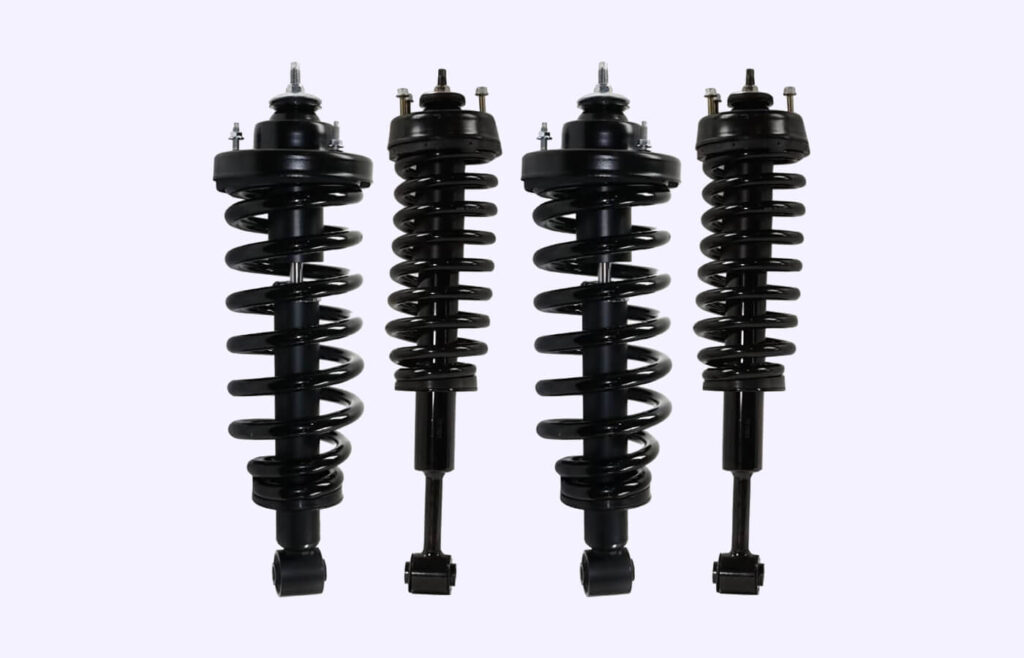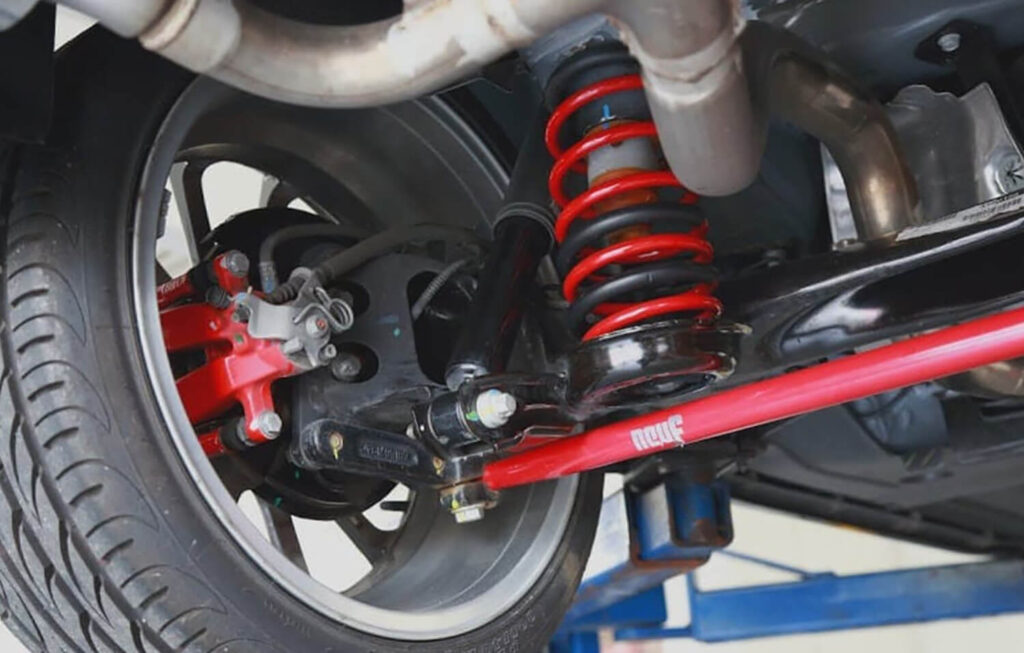Steering Through the Sea of Choices
Navigating the world of automotive parts is like sailing without a compass—unless you know what you’re looking for. Shock absorbers and struts are your vehicle’s unsung heroes, offering the control, comfort, and safety you need for a smooth ride. That’s why choosing the right components is vital, not just for performance but for peace of mind.
Fundamentals 101: What You Need to Know About Shocks and Struts
Let’s start with their shared mission: both shock absorbers and struts work to control the unwanted motion of your car’s springs, ensuring that your tires maintain constant contact with the road. They act as the buffer between your car’s body and the surface you’re driving on, damping down oscillations and providing a smoother, more controlled ride.
Shock absorbers are generally stand-alone components that work in concert with the springs, but they’re separate entities. They are most commonly located at the rear of the vehicle. Their sole job is to absorb and dissipate energy, kind of like the way a sponge soaks up water. Because they’re independent units, they offer a bit more flexibility when it comes to customizing your ride’s performance. You can upgrade just the shocks without having to mess with other elements like the springs.

Struts, on the other hand, are more of an all-in-one package. They combine both the shock absorber and the spring into a single integrated unit, and you’ll most often find them in the front of your vehicle. Because they serve a dual purpose—both absorbing shock and providing structural support to the suspension—they’re generally more complex and often costlier to replace. Struts can also affect your vehicle’s alignment and steering, adding another layer of importance to their role in your car.
Whether you’re looking for a comfortable family ride or a high-performance machine, knowing what’s under the hood helps you make choices that suit your needs, ensuring you’re not swayed by slick sales talk or flashy marketing.
Riding in Comfort: Key Features to Look For in New Shocks and Struts
• Build Quality: Opt for high-grade materials like steel or aluminum for durability and long-lasting performance. These materials are more resistant to corrosion and wear, ensuring a longer lifespan for your shocks and struts.
• Damping Adjustments: Some advanced shocks and struts offer adjustable damping settings, allowing you to customize the firmness of your ride. This feature can be especially useful for drivers who frequently switch between different driving conditions.
• Sealing: A quality seal prevents leaks, ensuring consistent performance. Leaks can compromise the effectiveness of your shocks and struts, so a strong seal is crucial.
• Reputation: Trusted brands often produce more reliable and durable products. Reading reviews and getting recommendations can guide you toward a product that’s tried and true.
• Compatibility: Ensure the shocks and struts you’re considering are compatible with your vehicle’s make and model. Incompatibility can lead to ineffective performance and potential safety risks.
• Warranty: A product with a strong warranty can provide peace of mind, knowing that you’re covered if a defect appears down the road.
The Full Package: What Else Should You Replace?
If you’re thinking of replacing your shocks and struts, it might be time to consider other elements in your vehicle’s suspension system that could use a refresh. Components like springs and sway bars work in tandem with your shocks and struts to provide a seamless driving experience. Springs, for instance, help your vehicle absorb impact, while sway bars reduce body roll during turns. Oftentimes, these parts wear out at a similar rate to your shocks and struts, so giving them a check when you’re under the hood is a proactive step.
Moreover, when replacing your shocks and struts, it’s generally advisable to replace both the front and rear sets concurrently. This ensures that your vehicle maintains a balanced level of performance, stability, and comfort. Replacing only the front or the back could create an imbalance in your vehicle’s suspension, potentially leading to an awkward ride and even a riskier driving situation. Think of it as wearing a new shoe on one foot and an old, worn-out one on the other; it’s not only uncomfortable but also affects your balance and gait.
Balancing Acts: The Necessity of Wheel Alignment After Replacement
After replacing your shocks and struts, your car’s overall geometry may be slightly off-kilter. This is where the importance of a wheel alignment comes into play. Think of your vehicle as a finely tuned orchestra; if one instrument is out of tune, it throws off the whole performance. A wheel alignment adjusts the angles of your vehicle’s wheels so that they are parallel to each other and perpendicular to the ground, ensuring that your vehicle handles at its optimal level.
Skipping this crucial step might seem like a small oversight, but it can lead to more significant issues down the line. For instance, a misaligned set of wheels can cause uneven tire wear, reducing the lifespan of your new tires significantly. Your vehicle might also experience pulling to one side or even a crooked steering wheel while driving straight. These issues can affect your driving experience, fuel efficiency, and could even lead to premature wear and tear on other parts of your vehicle. Therefore, a wheel alignment isn’t just a “nice-to-have” but a necessary step to ensure your vehicle performs at its peak after any major suspension work.

The Dollars and Cents: A Breakdown of Expected
• Parts Cost: You’ll typically pay between $250 to $600 for a quality set of shocks and struts. Premium models might cost more but usually offer extended durability and performance features.
• Labour Charges: These can vary depending on your location and the complexity of the job, but typically run between $100 to $300.
• Additional Components: If you’re also replacing springs, sway bars, or other suspension parts, you’ll need to budget for those components as well, which could add an extra $100 to $200 to your bill.
• Wheel Alignment: After replacing your shocks and struts, a wheel alignment is recommended, which could cost an additional $75 to $200.
• Geographical Variance: Prices can vary from one province to another, with urban centers often charging more due to higher overheads.
• Get Multiple Estimates: Shop around for quotes from different providers to ensure you’re not paying more than you should. It’s like price-matching for your car; it pays to do your homework.
Counting Time: How Long Does Replacement Typically Take?
The timeframe for this kind of job generally ranges from 2 to 4 hours. However, additional time may be required if other components, like springs or sway bars, are also being replaced. Budgeting your time can save you from last-minute headaches.
Making an Informed Purchase for a Smoother Ride Ahead
Equipping yourself with the right knowledge can transform your car maintenance experience from a bumpy ride into a smooth sailing journey. For those who find this overwhelming, consider reaching out to a mobile mechanic service. If you’re in Canada, Uchanics offers reliable, convenient solutions tailored to your vehicle’s needs. Because when it comes to the comfort and safety of your ride, making informed choices is the ultimate shock absorber.
